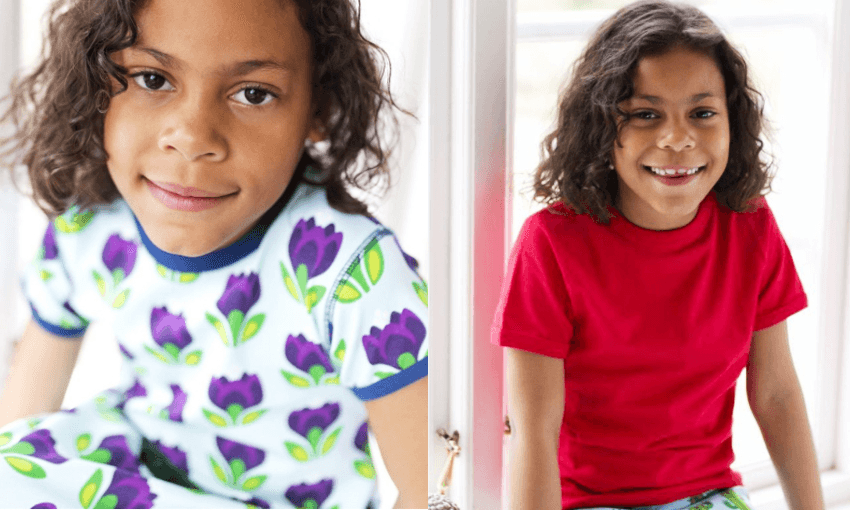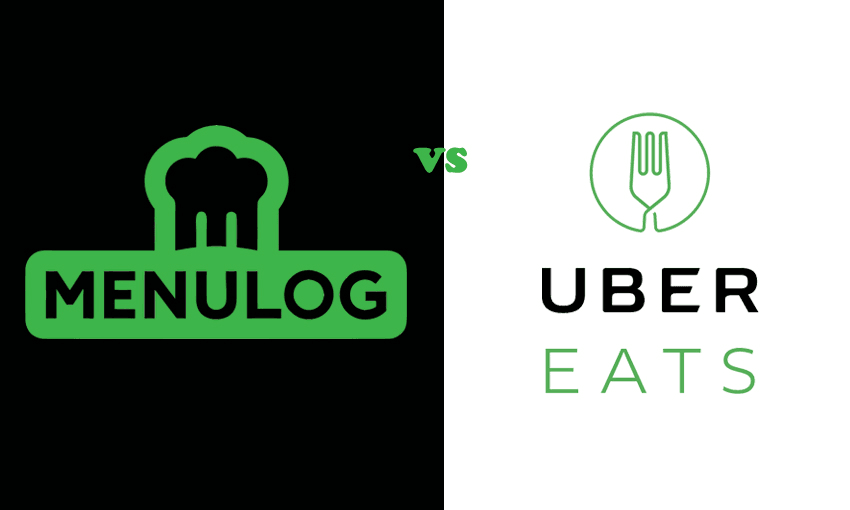Every week we ask a local business or product to introduce themselves in eight simple takes. This week we talk to Freedom Kids‘ Rachel Hansen who wants to help break gendered stereotypes among children – one ethically-produced, gender-neutral piece of clothing at a time.
ONE: How did Freedom Kids start and what was the inspiration behind it?
I’d been facilitating youth sexuality education workshops with parents, which included discussions about gender constructs. One example I used was the clothing ‘choices’ offered to kids. Mainstream stores clearly divide their stores into ‘boys’ clothes and ‘girls’ clothes. My son was met with a wall of dull browns, blues and greys with images of sports, trucks and violence. My daughter’s options were pink, pink, pink (plus a dash of purple) with images of unicorns and princesses. I don’t have a problem with any of these colours or any of these themes, but when kids are prescribed these based on their gender, it becomes incredibly limiting.
I now have two sons and one daughter and I’m determined to clothe them in ethically-produced, gender-free clothes. Freedom Kids was created with the aim of supporting parents who care about how clothing is produced and those who want to avoid placing gender expectations and limitations on their children.
TWO: Did you have any interest/experience in business or entrepreneurship prior to starting Freedom Kids?
I knew that I wanted to have the flexibility to choose my own work hours once I had children, so I’m grateful to have been self-employed since becoming a parent in 2008.
I founded Good Talks soon after I went on maternity leave for the first time. This was a gentle introduction to running a business as I was operating as a sole trader. It was a simple business model which involved me providing in-school workshops on sexuality, body image and social media. I’ve also had my own communications and research consultancy business since 2010.
Freedom Kids was a big step up and has been a huge learning curve for me. It’s been exciting, daunting and sometimes stressful, but overall a wonderful experience. The unexpected benefit is that everyone I deal with – customers, suppliers, colleagues in the industry – is super lovely, helpful and supportive.
THREE: What ages and/or sizes do you cater up to and what are some of your most popular products?
There’s very little fair trade, organic or gender neutral clothing available for kids beyond preschool, so I’ve always been determined to offer clothing up to age 12. I wanted people to be able to clothe their kids from birth to teens in Freedom Kids clothes.
Over the past six months, we’ve greatly expanded our range of ‘basics’, which are print- and slogan-free organic cotton t-shirts, tops, leggings, shorts, hoodies, bodysuits and pants. This range has been incredibly popular. We also stock a number of Scandinavian brands that are renowned for their fun prints and also sell out very fast.
A solid seller has always been our ethical undies. I’ve always been perplexed as to why kids undies were so skimpy, so we now stock a number of underwear brands and that are all super comfy. This summer, we also sold a lot of ethical swimwear, and our pre-orders for fair trade winter coats are going well.
FOUR: What do you think are the most important things to consider when making successful gender-neutral clothing for kids? Have you found that there are certain colours, styles, fits, patterns etc. that make one piece more successfully gender-neutral than another?
I’ve always been clear that clothes have no gender. Any gendering of clothes is a construct we adults place on them. When we first launched, some people contacted me because they were confused why we were selling dresses and skirts [to boys]. My response to that was that dresses and skirts were for anyone who wants to wear them!
I really like to have things that challenge gender norms, like pink dinosaur t-shirts and blue dresses with vehicles on them. People are bored with only being offered pink dresses and grey truck t-shirts.
Often when clothing has a ‘gender neutral’ label on it, it’s drab and boring. Our clothes are completely the opposite with lots of bright colours and vibrant patterns. Kids are drawn to these fun colours and patterns, and unlike much of kids clothing, our products aren’t just mini-adult versions.
FIVE: What aspects do you look for in a company when stocking their clothes on Freedom Kids?
I do a lot of research on companies before stocking their clothes. I like to get as much feedback as I can from people who have already tried the clothes and I always test them on my own kids for toughness. As well as being durable and fun, our three main criteria are that the clothes must be:
- Ethically produced. This means that all employees of the brand are, at a minimum, adults who receive fair wages, are working under healthy conditions, and are free from exploitation or discrimination. Many of our suppliers go beyond this and also have organic and fair trade certification.
- Gender-neutral. Colours are for everyone! Every style for every kid! All the clothes we stock can be worn by all genders. There are no slogans on any of our clothing that refer to gender and we try to have boys and girls model all items.
- Comfortable. A child’s most important job is to play – this is how they learn and develop. Therefore, none of our clothing restricts a child in any way both physically or mentally.
SIX: Do you think there’s still a lot of apprehension when it comes to dressing kids in a way that’s considered gendered (ie: dresses for boys)? If so, do you think a lot of that apprehension comes from the kids or the parents?
Yes, there is. But until kids reach a certain age, it’s not from other kids. It’s from the parents. I’m yet to meet a toddler who cared whether their buddy was wearing a dress or not, or what their gender was. Research shows that kids don’t become strongly aware of gender until about age two or three. Although they’ve already been keenly observing the world around them and will have observed messages about gender roles and identity.
By the age of three, if a child has been surrounded by people and messages that reinforce gender stereotypes, often they too become ‘gender police’. My son went through a stage when he was four of loving bright pink clothes and shoes. He endured negative comments about this. Once he started school, he quickly realised that it was easier to conform. My daughter, who’s now five, chopped all her hair off last year and often wears stereotypical ‘boy’ clothes. I’ve been shocked by the adults who’ve made comments about this in front of her – much more so than other children. Most of the time, she’s confident enough to scoff at the idea of hair or clothes as being gendered, although I know that it’s likely that peer pressure will take over soon.
SEVEN: Do you any other plans to scale/grow further and if so, what are they?
We’ve been open for two and a half years now and we’ve grown faster than I ever expected. Last year when our third child was born, I was lucky enough to find Michelle, an amazing person to step in and help out. She now looks after all our stock and sends out all the orders. It’s really great having someone else involved and this has meant I can focus more on marketing and strategic planning. However, my time is really limited with other work commitments plus three kids. I have so many ideas I’d love to implement as I feel we’re only just touching the surface of a potential market. So for the time being, we’re focusing on providing exceptional customer service and building our Facebook VIP group which provides excellent feedback and support for us.
EIGHT: Lastly, tell us about a start-up or business that you really admire right now.
Last week, a new Wellington business, Nisa, was launched. I love their ethos and I need to buy myself some of their undies, which look absolutely fabulous!
The Spinoff’s business content is brought to you by our friends at Kiwibank. Kiwibank backs small to medium businesses, social enterprises and Kiwis who innovate to make good things happen.
Check out how Kiwibank can help your business take the next step.





